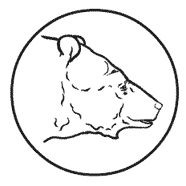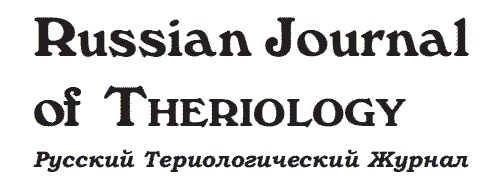Incisor and mandible anomalies in the Harting’s vole Microtus hartingi (Mammalia: Arvicolinae) in Europe
Zorenko T., Basov A., Kaija L.P., Mitkovska V.
P. 32-36
We observed incisor and mandibular anomalies in two populations of Harting’s vole from Strandzha foothills and the Eastern Rhodopes. In the laboratory colony of voles originating from the Rhodope foothills, over six years, incisor pathology persisted at a constant rate of 15%. In the colony of voles from Strandzha foothills, maintained at the University of Latvia (Riga) and Zoological Institute (Saint Petersburg) from 1988 to 2000, not a single case of incisor overgrowth was observed. However, M. h. strandzensis, caught in the same biotopes in early 2000’s, were examined for abnormal growth of the maxillary incisors and mandibular deformation. The new data on changes in the ecology of Harting’s vole over the last three decades are presented.
DOI: 10.15298/rusjtheriol.24.1.06References- Chassovnikarova T.G., Markov G.G., Atanasov N.I. & Dimitrov H.A. 2008. Sex chromosome polymorphism in Bulgarian populations of Microtus guentheri (Danford & Alston, 1880) // Journal of Natural History. Vol.42. P.261–267. DOI: 10.1080/00222930701835100
- Harvey S.B., Alworth L.C. & Blas-Machado U. 2009. Molar malocclusions in pine voles (Microtus pinetorum) // Journal of the American Association for Laboratory Science. Vol.48. P.412–415.
- Imai D.M., Pesapane R., Conroy C.J., Alarcon C.N., Allan, N., Okino R.A., Fung J., Murphy B.G., Verstraete F.J.M. & Foley J.E. 2018. Apical elongation of molar teeth in captive Microtus voles // Veterinary Pathology. Vol.55. P.572–583. DOI: 10.1177/0300985818758469
- Imbschweiler I., Schauerte N., Henjes C., Fehr M. & Baumgärtne W. 2011. Odontogenic dysplasia in the molar teeth of steppe lemmings (Lagurus lagurus) // Veterinary Journal. Vol.188. P.365–368. DOI: 10.1016/j.tvjl.2010.05.017
- Jheon A.H., Prochazkova M., Sherman M., Manoli D.S., Shah N.M., Carbone L. & Klein O. 2015. Spontaneous emergence of overgrown molar teeth in a colony of prairie voles (Microtus ochrogaster) // International Journal of Oral Science. Vol.7. P.23–26. DOI: 10.1038/ijos.2014.75
- Jentzsch M., Kraft R., Lemkul A., Kapische H.-J., Maternowski H.W. & Wolf R. 2020. Anomalies and pathological changes of skulls and dentition of wild small mammal species from Germany // Journal of Vertebrate Biology. Vol.69. No.4. P.e20072-1. DOI: 10.25225/jvb.20072
- Korey I.E., Meric E., Killing G., Brenner R.A. & Do Gan A.U. 2004. Black Sea-Marmara Sea Quaternary connections: new data from the Bosphorus, Istanbul, Turkey // Paleogeography, Paleoclimatology, Paleoecology. Vol.204. No.3–4. P.277–295. DOI: 10.1016/S0031-0182(03)00731-4
- Kryštufek B. & Shenbrot G.I. 2022. Voles and Lemmings (Arvicolinae) of the Palearctic Region. Maribor, Slovenia: Maribor University Press. 436 p.
- Markov G. 1960. Microtus güentheri strandzensis subsp. nov. eine neue wühlmaus – unterart im Strandza-Gebirge, Ostbulgarien // Proceeding of the Bulgarian Academy of Sciences. Vol.13. P.615–617.
- Markov G. & Dimitrov H. 2010. Habitat fragmentation and its implications for abundance of Guenther’s vole in southeastern Bulgaria (Strandzha mountain region) // Biotechnology & Biotechnological Equipment. Vol.24. P.679–682. DOI: 10.1080/13102818.2010.10817921
- Whitlock M.C. 2003. Fixation probability and time in subdivided populations // Genetics. Vol.164. P.767–779. DOI: 10.1093/genetics/164.2.767
Download PDF
|

